By: Edwin Sarmiento | Comments (10) | Related: 1 | 2 | 3 | 4 | > Clustering
Problem
In a previous tip on Validating a Windows Cluster Prior to Installing SQL Server 2014, I have seen how to install SQL Server 2014 on a Windows Server 2012 R2 failover cluster (WSFC). With Windows Server 2016 already publicly available, I would like to upgrade and migrate my SQL Server 2008 failover clusters to SQL Server 2016 running on Windows Server 2016. How do I go about building a Windows Server 2016 failover cluster for SQL Server 2016 and eventually upgrade and migrate my databases?
Solution
To continue this series on Step-by-step Installation of SQL Server 2016 on a Windows Server 2016 Failover Cluster, we will look at adding a node to an existing SQL Server 2016 failover clustered instance (FCI).
- Part 1 completed the installation of the Failover Clustering feature on both of the servers that will be used as part of the WSFC and ran the Failover Cluster Validation Wizard.
- Part 2 created the WSFC using the Create Cluster Wizard.
- Part 3 completed the installation of a single-node SQL Server 2016 FCI.
SQL Server 2016 Failover Cluster Instance Installation - Install Secondary (Failover) Cluster Node
Now that you have a working SQL Server 2016 FCI, you make it highly available by adding nodes. To add a node to an existing SQL Server 2016 FCI,
- Run setup.exe from the SQL Server 2016 installation media
to launch SQL Server Installation Center. Click on the
Installation link on the left-hand side.
- Click the Add node to a SQL Server failover cluster link.
This will run the SQL Server 2016 Setup wizard.
- In the Product Key dialog box, enter the product key that
came with your installation media and click Next.
- In the License Terms dialog box, click the I accept
the license terms check box and click Next.
- In the Global Rules dialog box, validate that the checks
return successful results and click Next.
- In the Microsoft Update dialog box, click Next.
- In the Add Node Rules dialog box, validate that the checks
return successful results. If the checks returned a few warnings, make sure
you fix them before proceeding with the installation. Click Next.
- In the Cluster Node Configuration dialog box, validate
that the information for the existing SQL Server 2016 FCI is correct. Click
Next.
- In the Cluster Network Configuration dialog box, validate
that the IP address information is the same as the one you provided in
the previous tip.
- In the Service Accounts dialog box, verify that the information
is the same as what was used to configure the first node. Provide the appropriate
credentials for the corresponding SQL Server service accounts.
- In the Feature Rules dialog box, verify that all checks
are successful. Click Next.
- In the Ready to Add Node dialog box, verify that all configuration
settings are correct. Click Install to proceed with the installation.
- In the Complete dialog box, click Close.
This concludes adding a node to an existing SQL Server 2016 FCI.
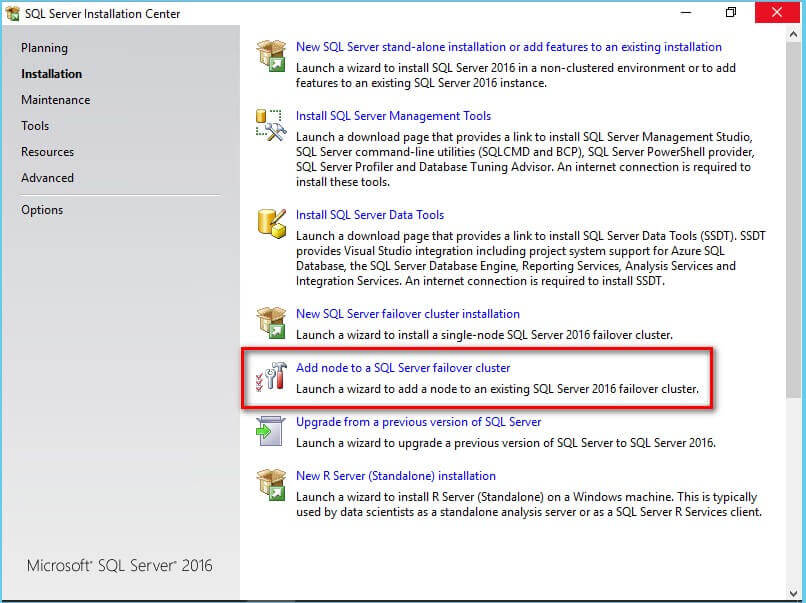
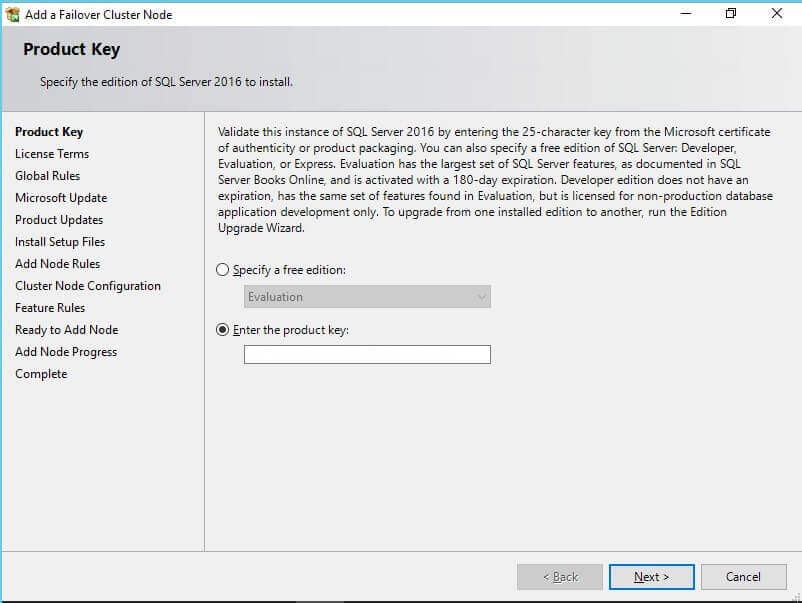
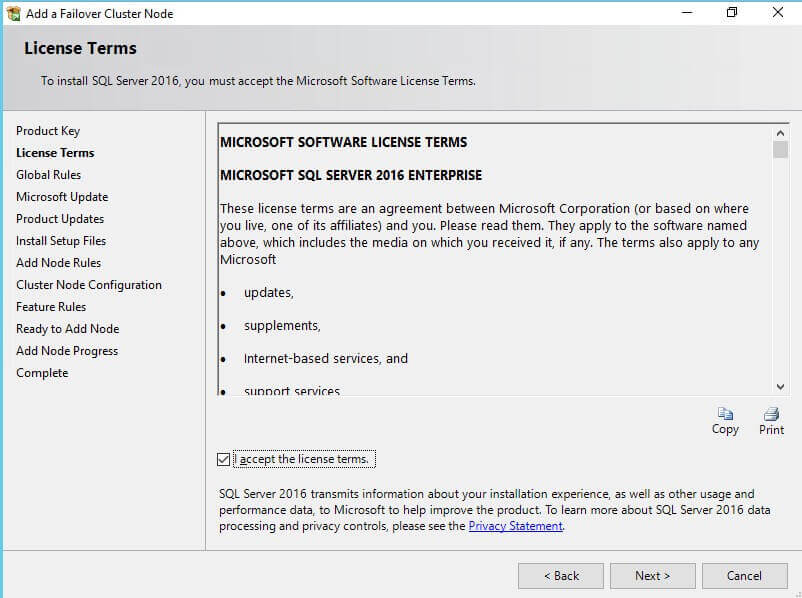
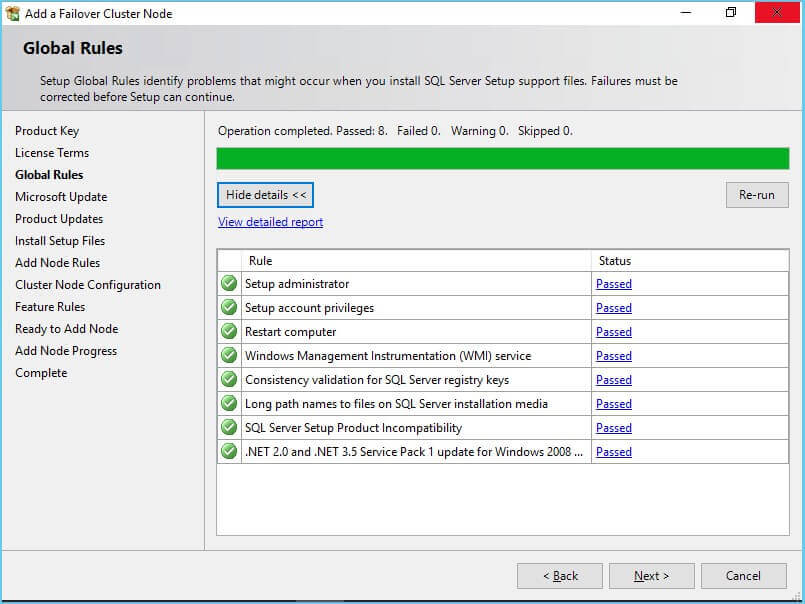
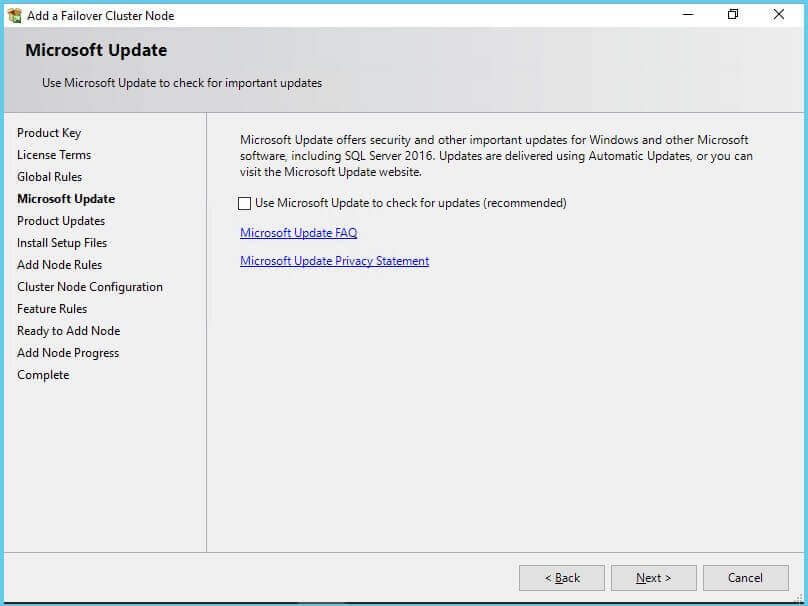
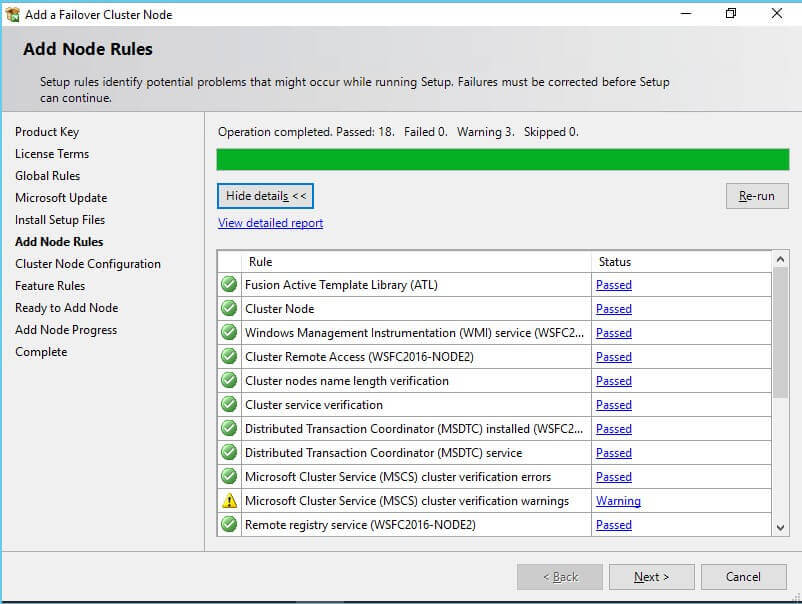
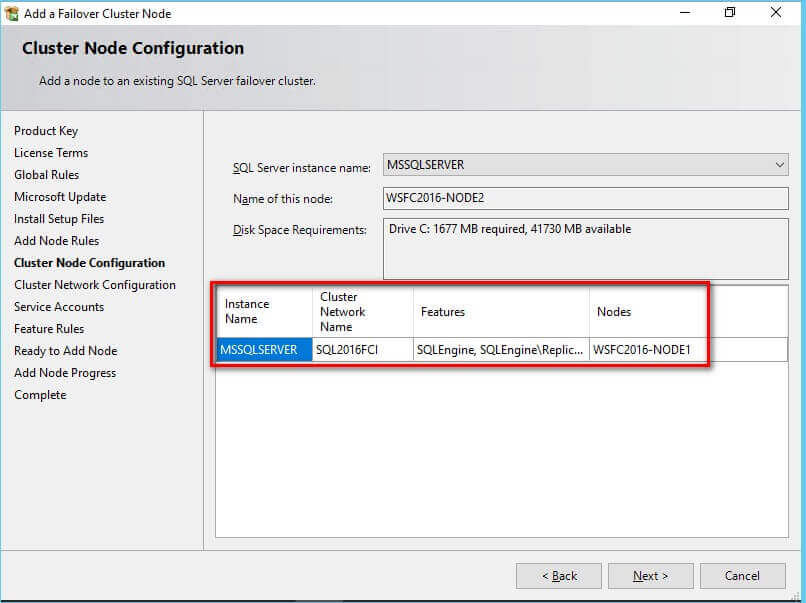
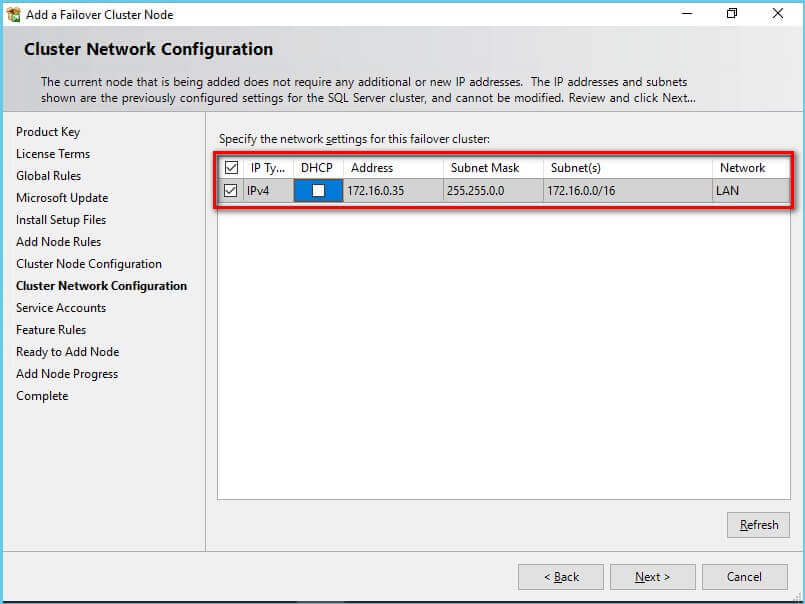
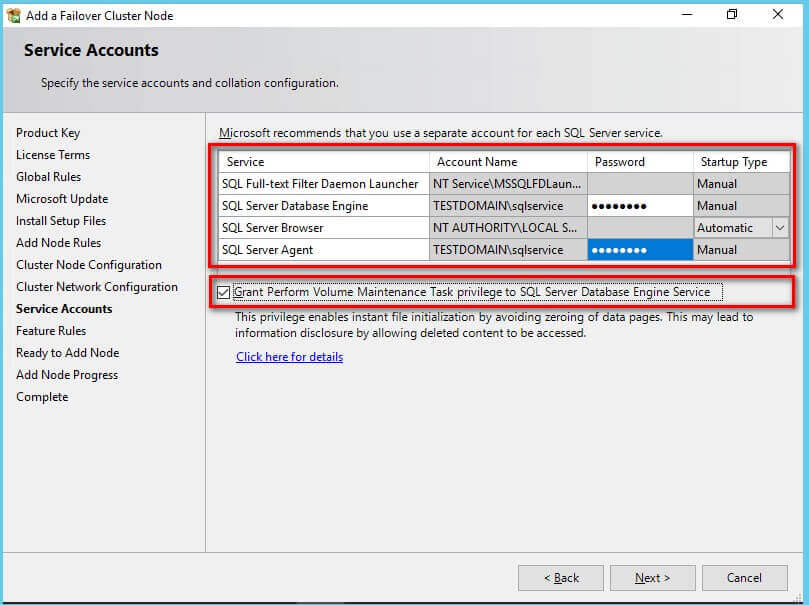
NOTE: Pay close attention to the order of the SQL Server services especially when you use different service accounts. In the previous tip, you see the SQL Server Agent service come before the SQL Server Database Engine service. Here, it's the reverse - the SQL Server Database Engine service comes before the SQL Server Agent service. Be sure not to mix those two up.
Select the checkbox Grant Perform Volume Maintenance Task privilege to SQL Server Database Engine Service to enable Instant File Initialization for SQL Server as highlighted in this tip. Because this is a local permission assigned to an account, you need to explicitly do this on all of the nodes in the SQL Server FCI.
Click Next.
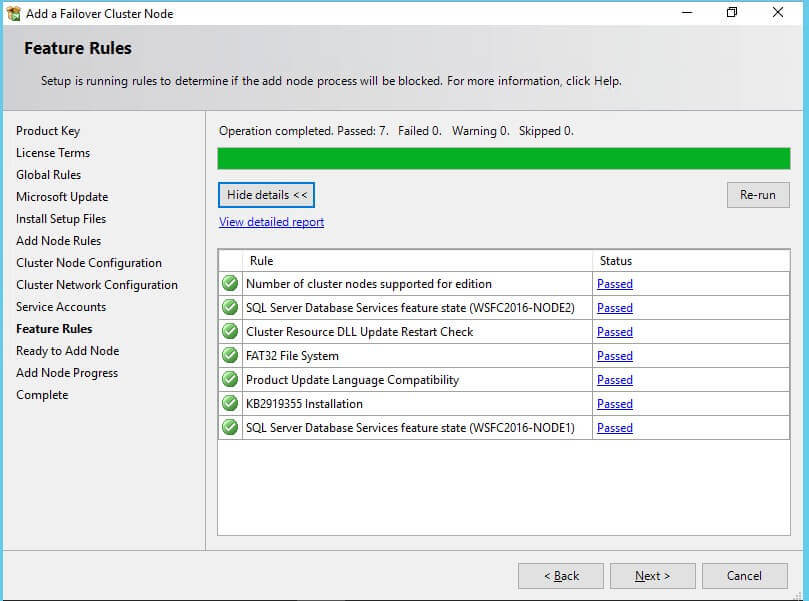
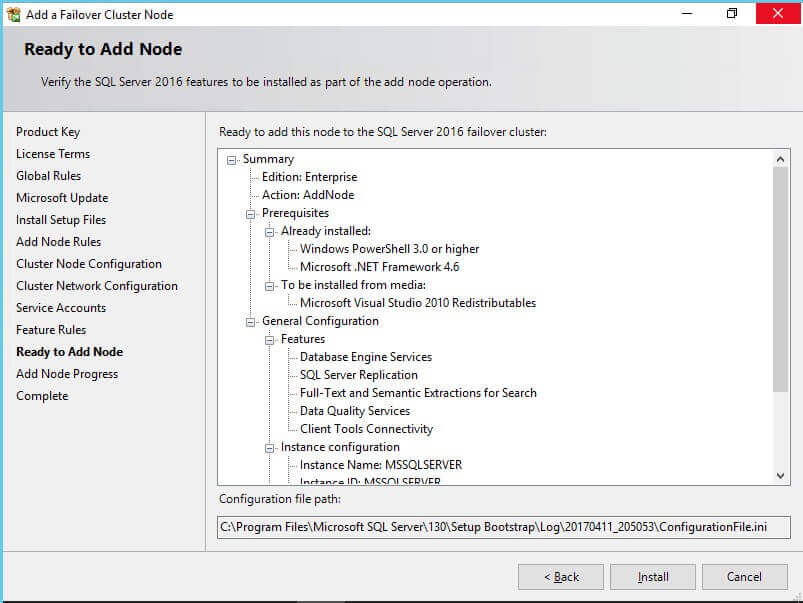
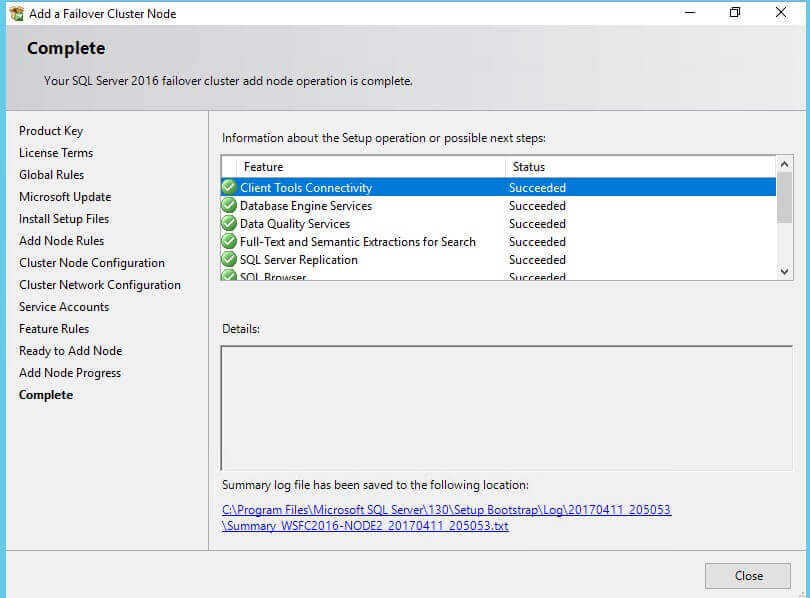
To add more nodes to the SQL Server 2016 FCI, simply repeat steps #1 to #13.
At the completion of a successful installation and configuration of the node, you need to validate whether the SQL Server 2016 FCI will failover - either automaticaly or manually - to all of the available nodes.
Testing SQL Server 2016 FCI Manual Failover with Application Connectivity
A simple way to test whether or not the SQL Server 2016 FCI works is to perform a manual failover. This process involves moving the SQL Server cluster resource group/role from one node to another.
For this test, a simple query using SQL Server Management Studio as the client application can be used. It is recommended to perform this test with application connectivity to observe how the application behaves during the failover process. Refer to the query below and connect to the SQL Server 2016 FCI.
SELECT @@SERVERNAME AS InstanceName,
SERVERPROPERTY ('ComputerNamePhysicalNetBIOS') AS NodeName
SELECT * FROM sys.dm_os_cluster_nodes
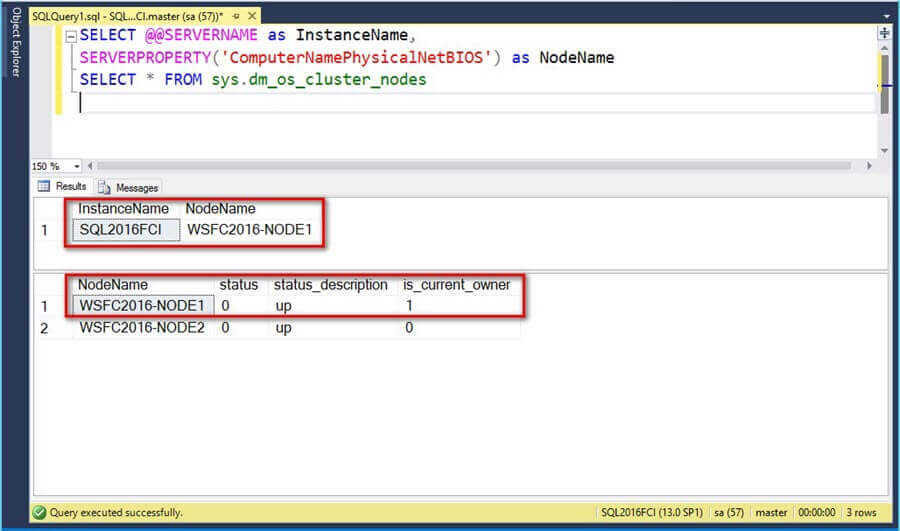
To test the failover process using the Failover Cluster Manager console,
- Expand Roles and select SQL Server (MSSQLSERVER).
- Right-click the SQL Server (MSSQLSERVER) role, select
Move and click Select Node.
- In the Move Clustered Role dialog box, select the node
where you want the SQL Server FCI to move into. Click OK.
- After the failover process completes, re-run the query above to verify that
the SQL Server FCI is now running on the other node.
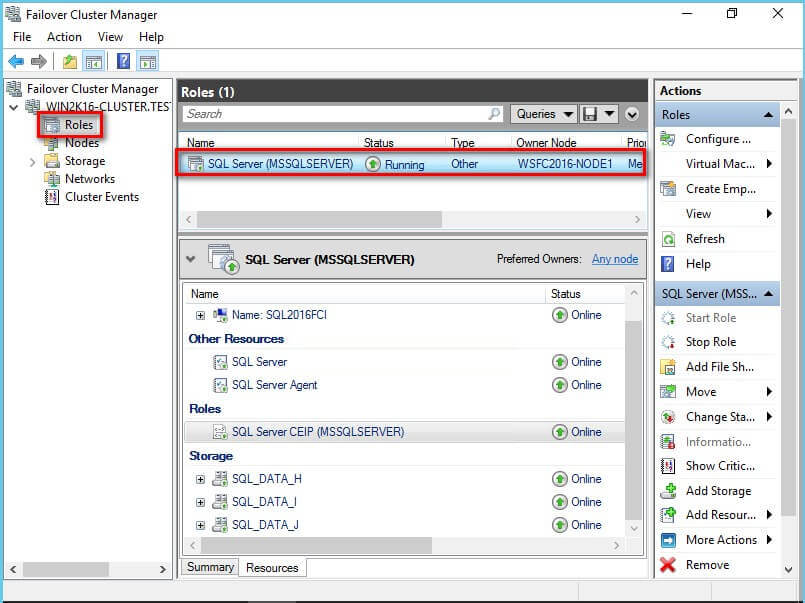
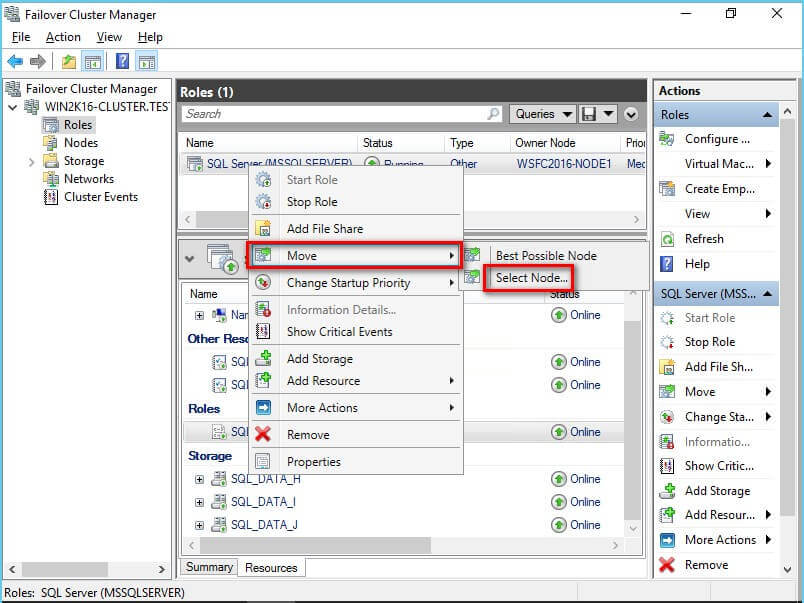
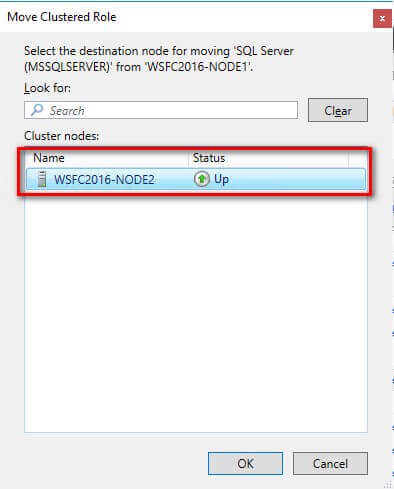
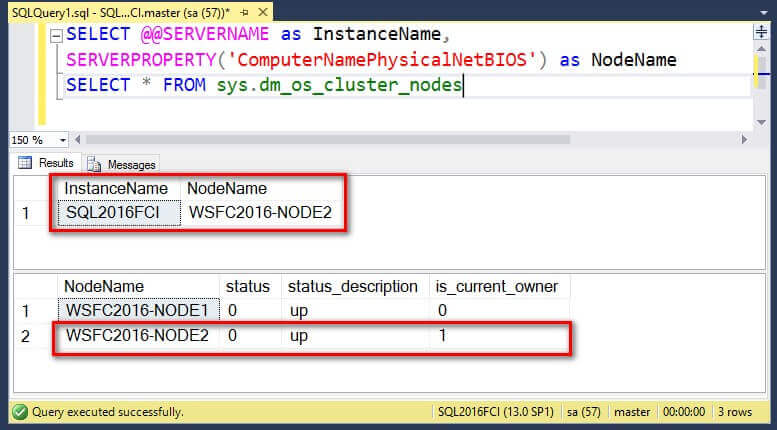
Another way of performing a manual failover test is by using the Move-ClusterGroup PowerShell cmdlet as described in this previous tip.
Move-ClusterGroup "SQL Server (MSSQLSERVER)" -Node "WSFC2016-NODE2"
Testing SQL Server 2016 FCI Automatic Failover
The ultimate test of validating whether or not a SQL Server FCI works is to invoke automatic failover by simulating real failure. While this is easier said than done when you only access your servers remotely, it is still recommended to perform these tests. The following can be performed to simulate failure of a WSFC node and initiate automatic failover of the SQL Server FCI. Note that these steps need to be performed using remote control management tools like HPE's iLO or an IP-based KVM (keyboard, video and mouse) - not Microsoft Remote Desktop - if you are accessing the servers remotely. You can also ask the data center engineers to unplug cables to simulate real failure.
- Reboot nodes
- Disable network adapters
- Kill Microsoft Failover Cluster Service - clussvc.exe
- Kill SQL Server service - sqlservr.exe
Congratulations! You now have a working two-node SQL Server 2016 FCI running on Windows Server 2016.
Next Steps
- Review the previous tips on Install SQL Server 2008 on a Windows Server 2008 Cluster Part 1, Part 2, Part 3 and Part 4 to see the difference in the setup experience between Windows Server 2008 and Windows Server 2016.
- Read more on the following topics:
About the author
 Edwin M Sarmiento is a Microsoft SQL Server MVP and Microsoft Certified Master from Ottawa, Canada specializing in high availability, disaster recovery and system infrastructures.
Edwin M Sarmiento is a Microsoft SQL Server MVP and Microsoft Certified Master from Ottawa, Canada specializing in high availability, disaster recovery and system infrastructures.This author pledges the content of this article is based on professional experience and not AI generated.
View all my tips






